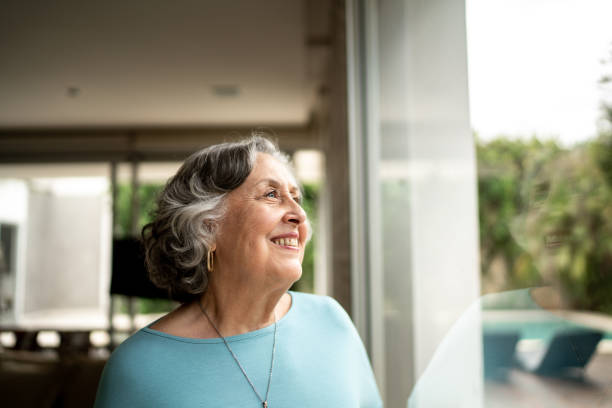Aging is an inevitable part of life, yet how we approach the process can significantly influence our overall well-being. In today’s fast-paced society, aging is often seen through a negative lens — a battle against time that must be fought with anti-aging products and quick-fix remedies. However, mindful aging offers an entirely different perspective. It encourages individuals to embrace each stage of life with awareness, intention, and self-compassion. By integrating mindfulness into the aging process, we can cultivate a deeper sense of wellness that nurtures the mind, body, and spirit.
Contents
Understanding Mindful Aging
Mindful aging is the practice of approaching aging with present-moment awareness, acceptance, and gratitude. Rather than resisting the physical and emotional changes that come with time, mindful aging encourages us to observe these changes without judgment and respond with kindness toward ourselves. This perspective does not mean ignoring the natural challenges that aging may bring, such as changes in health, mobility, or appearance. Instead, it invites us to shift our mindset from fear and resistance to curiosity and acceptance.
At its core, mindful aging draws from mindfulness practices — the same techniques used in meditation, yoga, and other contemplative traditions — to foster resilience, reduce stress, and enhance emotional balance. By paying attention to the present, we can engage more fully with life as it is, rather than dwelling on regrets of the past or anxieties about the future.
The Role of Physical Wellness in Mindful Aging
Mindful aging places a strong emphasis on physical well-being, not in the sense of striving for youthful perfection, but rather through cultivating a compassionate relationship with the body. As we age, physical changes such as reduced flexibility, slower metabolism, and changes in skin texture are natural occurrences. Instead of viewing these changes as signs of decline, mindful aging encourages us to see them as reminders of our body’s journey and resilience.
Incorporating gentle movement practices like yoga, tai chi, or walking meditation can enhance both physical health and mindful awareness. These activities encourage deep breathing, body awareness, and a sense of connection between movement and inner calm. Additionally, mindful eating — slowing down to savor each bite, paying attention to hunger and fullness cues, and choosing nourishing foods — supports the body’s evolving needs and enhances digestive health.
Emotional and Mental Well-being Through Mindfulness

Aging can bring emotional challenges, including adjusting to retirement, coping with loss, or navigating shifts in identity and purpose. Mindful aging recognizes these challenges and offers tools to process them with clarity and self-compassion.
Mindfulness meditation is a particularly valuable practice for emotional well-being in later years. By sitting quietly and observing thoughts and emotions without attachment, individuals learn to respond to life’s changes with greater calm and flexibility. This capacity for emotional resilience helps foster healthier relationships, improved mood, and a sense of peace, even in times of transition.
Another key element of mindful aging is maintaining cognitive vitality. Lifelong learning, creative expression, and intellectual curiosity all contribute to mental sharpness. Whether through reading, writing, painting, or engaging in meaningful conversations, stimulating the mind fosters a sense of growth and adaptability at every age.
Nurturing the Spirit and Sense of Purpose
Beyond physical and emotional well-being, mindful aging also addresses the spiritual dimension of wellness. As we age, many of us naturally reflect on questions of purpose, legacy, and meaning. Mindful aging invites us to engage with these questions in a way that is enriching rather than overwhelming.
Practices such as gratitude journaling, spending time in nature, or participating in community service can cultivate a deep sense of connection to something greater than oneself. This spiritual aspect of aging helps foster a sense of wholeness, guiding individuals to embrace their unique path with purpose and grace.
A sense of purpose is also closely linked to longevity and overall well-being. Studies have shown that individuals who feel they are contributing to their communities or families experience lower levels of stress and enjoy better physical and emotional health. Whether mentoring younger generations, volunteering, or pursuing creative passions, purposeful living is a cornerstone of mindful aging.
Embracing Change with Curiosity and Openness
Ultimately, mindful aging is not about avoiding change but learning to move through change with grace and curiosity. Every wrinkle, every gray hair, every shift in perspective offers a chance to appreciate the richness of life. By letting go of rigid expectations about what aging should look like, we open ourselves to unexpected beauty, wisdom, and connection.
Mindful aging does not ask us to be perfect or immune to the difficulties of growing older. Instead, it teaches us to meet these experiences with compassion, adaptability, and courage. In doing so, we transform aging from a process of loss into a journey of continuous discovery.
As we embrace mindful aging, we begin to see wellness not as a fixed goal but as a dynamic interplay of body, mind, and spirit. This holistic approach honors our evolving needs and empowers us to live with authenticity, purpose, and joy — at every age and stage of life.
